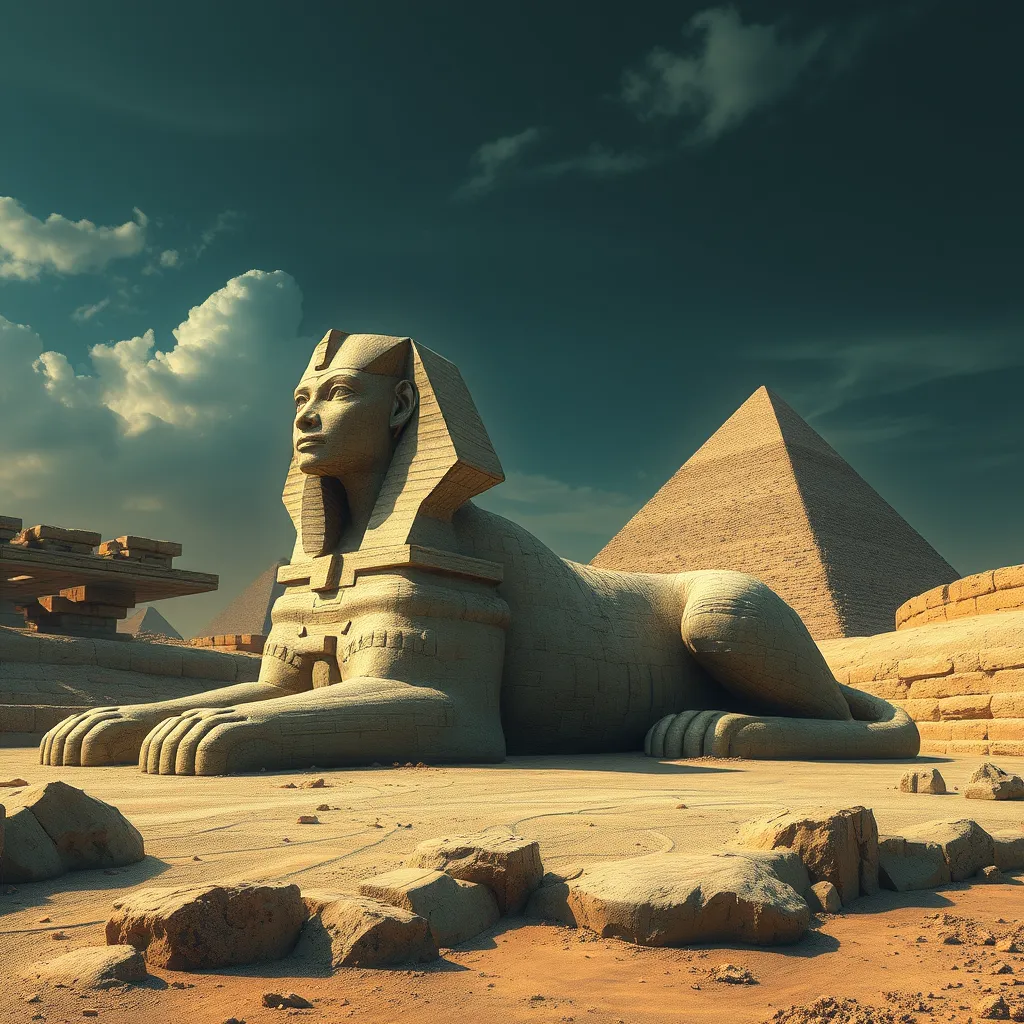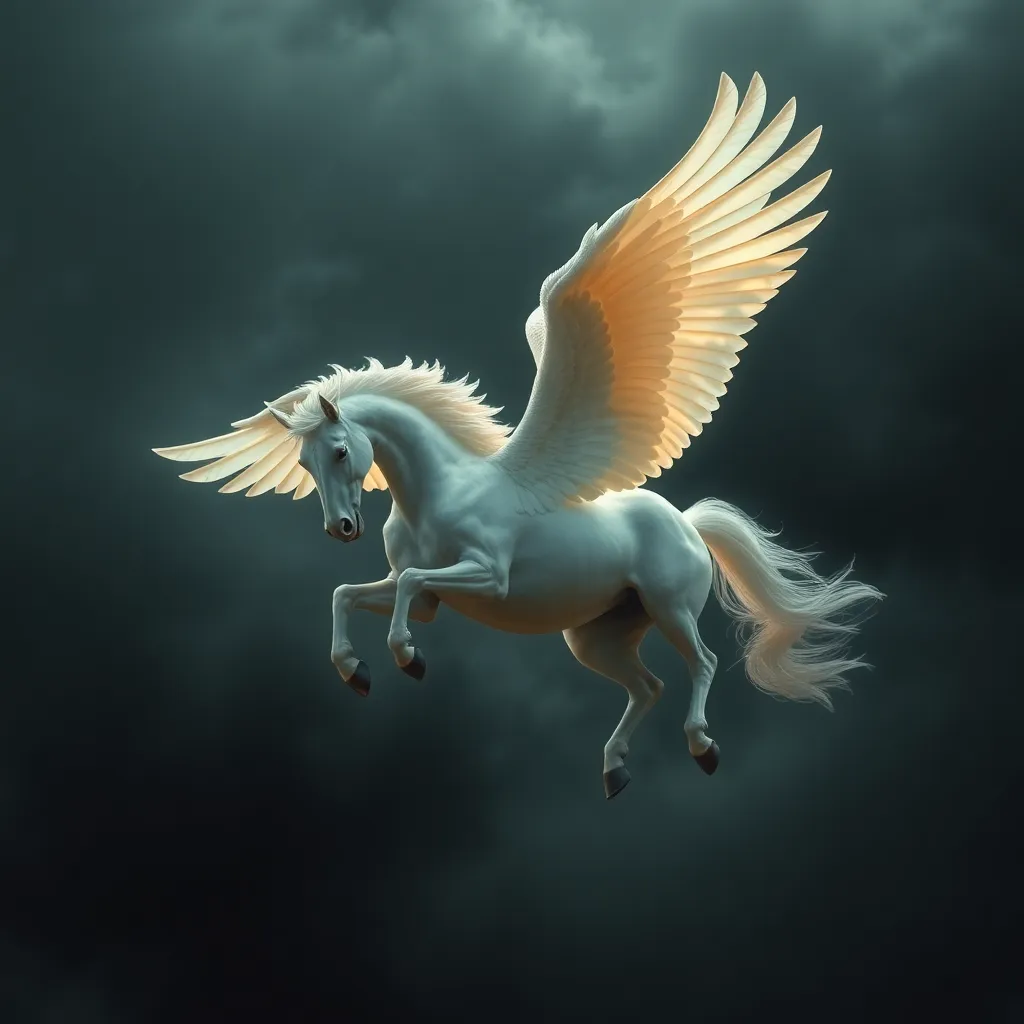The Sphinx in Folklore: Myths and Legends from Around the World
I. Introduction
The Sphinx, a mythical creature with a lion’s body and a human head, has captured the imagination of cultures around the globe for centuries. This enigmatic figure serves as a symbol of mystery, guardianship, and wisdom. From ancient Egypt to modern interpretations, the Sphinx has been a significant part of folklore, representing various themes and ideas in different cultures.
This article aims to explore the significance of the Sphinx across various cultures, examining its historical roots, symbolic meanings, and the legends that surround it. By delving into the Sphinx’s role in mythology and folklore, we can gain a deeper understanding of its universal appeal and the insights it offers into human civilization.
II. The Egyptian Sphinx: Guardian of the Tombs
The Great Sphinx of Giza, one of the most iconic symbols of ancient Egypt, dates back to around 2500 BC during the reign of Pharaoh Khafre. Carved from limestone, this colossal statue stands at 66 feet high and spans 240 feet long, facing the rising sun. Its construction is steeped in mystery, and it is believed to have served as a guardian for the nearby pyramids, ensuring safe passage into the afterlife.
In ancient Egyptian mythology, the Sphinx symbolized strength and wisdom. It was often associated with the sun god Ra and represented the pharaoh’s power. The Sphinx was also seen as a protector of sacred spaces, embodying the dual qualities of ferocity and benevolence.
Legends surrounding the Sphinx include tales of its role in the afterlife. It was believed that the Sphinx would pose riddles to the souls of the deceased, testing their worthiness to enter the realm of the afterlife. This association with riddles emphasizes the Sphinx’s connection to knowledge and enlightenment.
III. The Greek Sphinx: Riddles and Tragedy
The Greek Sphinx, a variation of its Egyptian counterpart, is perhaps best known for its chilling riddle posed to travelers: “What walks on four legs in the morning, two legs at noon, and three legs in the evening?” This riddle became central to the tragic story of Oedipus, who, upon solving it, freed Thebes from the Sphinx’s terror.
The origins of the Greek Sphinx can be traced back to the myths of ancient Greece, where it was depicted as a monstrous being that devoured those who could not answer its riddle. This portrayal emphasizes the Sphinx’s role as a harbinger of fate and destruction.
Interpretations of the Sphinx’s character in Greek culture vary. Some view it as a symbol of knowledge and wisdom, while others see it as a representation of the inevitable tragedy of human existence. The Sphinx serves as a reminder of the dual nature of life—knowledge can bring both enlightenment and destruction.
IV. The Sphinx in Asian Mythologies
In Asian folklore, sphinx-like creatures can be found in various traditions. For instance, the Narasimha, a half-man, half-lion avatar of the Hindu god Vishnu, embodies similar characteristics to the Sphinx. Narasimha is revered for his strength and protective nature, symbolizing the triumph of good over evil.
While the Sphinx and its Asian counterparts share similarities, there are notable differences in their portrayals. For example, the Narasimha represents the divine intervention of a god, while the Sphinx often embodies a more ambiguous nature, straddling the line between guardian and predator.
These beings hold significant roles in moral and spiritual narratives, often serving as catalysts for transformation and enlightenment. Their stories emphasize the importance of wisdom, courage, and the quest for truth.
V. The Sphinx in African Folklore
Across Africa, variations of the Sphinx appear in different cultural narratives. For instance, in some West African traditions, creatures resembling the Sphinx serve as protectors of sacred knowledge and spaces. These beings are often depicted as wise guardians, embodying the cultural values of strength and intelligence.
The role of the Sphinx in African storytelling and oral traditions is prominent. These narratives frequently explore themes of wisdom, justice, and the relationship between humans and the divine. The Sphinx’s symbolic meanings in African mythology often revolve around the concepts of life, death, and rebirth.
VI. The Sphinx in Literature and Art
The Sphinx has been a prominent figure in classical literature, appearing in works by authors such as Sophocles and Ovid. Its representation in these texts often highlights the themes of fate, knowledge, and the human condition. The Sphinx’s riddles and mysteries serve as metaphors for the challenges and uncertainties of life.
In modern literature and popular culture, the Sphinx continues to influence storytelling and artistic expression. From films to novels, the Sphinx’s enigmatic nature captivates audiences, inspiring countless interpretations and adaptations.
Artistic depictions of the Sphinx have evolved throughout history, ranging from ancient sculptures to contemporary works. Artists often explore the duality of the Sphinx, showcasing both its fearsome and benevolent qualities. The Sphinx remains a powerful symbol in visual arts, representing the intersection of knowledge and mystery.
VII. The Sphinx in Modern Interpretations
In contemporary media, the Sphinx serves as a symbol of mystery and enigma. It appears in various forms, from literature and film to video games and advertising, often representing the quest for knowledge and the unknown.
Psychological and philosophical interpretations of the Sphinx delve into its symbolism as a representation of the human psyche. The Sphinx embodies the struggle between rationality and instinct, knowledge and ignorance, challenging individuals to confront their own riddles and truths.
The Sphinx’s relevance in today’s society is evident in its enduring legacy. It continues to inspire discussions about knowledge, power, and the complexities of existence. As a universal symbol, the Sphinx transcends cultural boundaries, reminding us of our shared human experiences and the mysteries that lie within.
VIII. Conclusion
In summary, the Sphinx is a multifaceted symbol that has captivated cultures worldwide for millennia. From its origins in ancient Egypt to its interpretations in Greek mythology, Asian folklore, and African traditions, the Sphinx embodies themes of wisdom, mystery, and the duality of existence.
The universal appeal of the Sphinx illustrates its significance in understanding human mythology and folklore. As a guardian of knowledge and a harbinger of fate, the Sphinx invites us to explore the depths of our own understanding and confront the mysteries of life.
Ultimately, the Sphinx stands as a testament to the enduring power of myth and legend, reminding us of our shared narrative as human beings seeking truth in a complex world.




